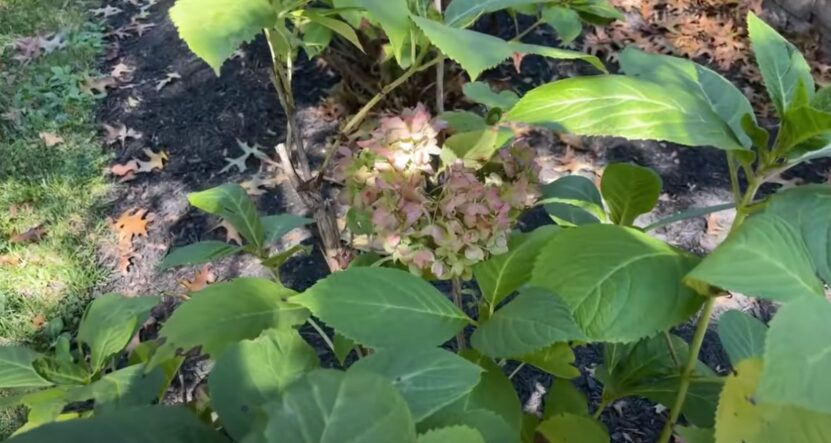Some Known Questions About Hydrangea Leaves Turning Yellow.
Table of ContentsThe Buzz on Hydrangea Leaves Turning YellowThe smart Trick of Hydrangea Leaves Turning Yellow That Nobody is Talking AboutHydrangea Leaves Turning Yellow Can Be Fun For EveryoneFascination About Hydrangea Leaves Turning YellowHydrangea Leaves Turning Yellow Can Be Fun For Everyone
Big fallen leaves frequently look saggy during the afternoon warm. When they fail to perk up in the evening or still look shrivelled in the morning, your plant might be overwatered.Get rid of the plant from the soil and trim out any type of origins that aren't white and turgid (plump). Replant in a brand-new area or work some sand into the soil for better water drainage. Underwatering likewise triggers entrusts to transform yellow with brown, crunchy sides. Don't try to deal with the trouble by sprinkling excessively.
Photosynthesis, as we all understand, is essential for plant survival, so chlorosis demands to be dealt with quickly. While chlorosis can be caused by various other nutrient deficiencies, it is most typically an iron deficiency. In the complying with area you will learn exactly how to recognise whether your plant has an iron shortage or something else.
likewise initially shows up on the older leaves, however the fallen leave capillaries stay eco-friendly. A magnesium shortage appears first on old fallen leaves and must not be confused with an iron shortage [Photo: izzzy71/ Shutterstock. com] While there is typically sufficient iron in all-natural soil, hydrangeas usually have a hard time to take in sufficient of it.
The Ultimate Guide To Hydrangea Leaves Turning Yellow
The finest method to avoid iron deficiency-chlorosis in hydrangeas is to plant them in appropriate ericaceous or acidic soil. When growing in a bed, mix in some peat or reduced-peat ericaceous compost and examine the p, H worth annually. This is required due to the fact that the compost combination around the plants will affect the p, H value of the dirt in the long run and the p, H value may rise once more.
It is just made use of on a commercial range, where a long term iron shortage would certainly mean substantial yield losses. The special fertilisers for this are typically expensive and require to be applied in really accurate dosages to avoid damage to the leaves. Foliar fertilisation is just efficient for a brief period and must be applied regularly or supplemented by typical iron fertilisation.
September is the best time of year to do something about those hydrangeas. Their fallen leaves are transforming yellow, the blossoms have actually faded, and their gangly look is making you insane.
Currently to deal with the staying bush, not a pretty sight as winter season techniques. Mophead, Lacecap and Oakleaf hydrangeas flower on old wood. What that suggests is they will flower following year on wood that was formed this year. Do not trim Mophead, Lacecaps and Oakleaf hydrangeas to the ground, as you will certainly get rid of the stems that prepare to grow following spring.
Getting The Hydrangea Leaves Turning Yellow To Work
That method you won't be getting rid of also several of next year's flower buds. If the shrub is obtaining bigger than you like, you can take out a 3rd of the real-time timber while you're in there.
We're appropriate in the middle of our late-blooming hydrangea period right here, so I believed I would certainly share a pointer for this specific kind of hydrangea that I discovered actually interesting. A lot of individuals have a similar problem with their panicle hydrangeas where they begin to see the leaves transforming yellow and leaving at different components of the season and it can be rather dramatic and rather worrying since it can take place truly promptly on a bush that feels like it's or else really healthy.

Where we stay in zone 6, they're fairly easy to have success with and they're truly prominent in our location, which is terrific because that indicates that there are hydrangeas almost everywhere right now of year. When you see your hydrangea leaves starting to transform yellow, you may think that your plant is passing away or being maltreated in some way, but as a matter of fact, the reverse holds true.
The 2-Minute Rule for Hydrangea Leaves Turning Yellow
If you actually wish to maximize flowers, a (the middle number) will actually aid increase the number and size of your blooms. You ought to see the variety of newly-yellowed fallen leaves lower rather rapidly as soon as you provide your hydrangea the food it requires. Hydrangea Leaves Turning Yellow. The great news is that if you do absolutely nothing, the plant will certainly still be great, it will simply have a couple of less fallen leaves
Courtenay is the writer of the publication The Cleansing you can look here Ninja and has actually been featured in numerous magazines consisting of Country Sampler Farmhouse Style, Better Houses and Gardens, Parents Magazine, Real Simple, and Our Homes.
Water logged dirt robs the origins of oxygen, resulting in root rot and yellow leaves. On the various other hand, underwatering or dehydration creates the plant to wilt and its foliage to yellow. Keeping a constant watering routine and ensuring proper water drainage through water drainage holes or layers can aid protect against these problems.
With proper care and upkeep, hydrangeas can flourish and retain their vivid, vibrant fallen leaves. Hydrangea leaves transforming yellow is an usual concern that can be associated to various elements.
The Only Guide for Hydrangea Leaves Turning Yellow
